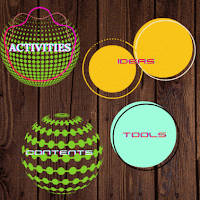Classroom Routines
Re-posted by Lydia Le
Classroom
routine refers to ‘a well-rehearsed response to a teacher's directive. The
alternative is usually noise, milling around, and time wasting on the part of
students, as well as nagging on the part of the teacher’ (Jones, n.d).
According
to Dr.
Jones, classroom routine is one of teacher's powerful tools of
saving time and working energy during daily teaching activities. To him,
however, classroom routines are not simply being announced. Classroom routines
must be taught and experienced/practised until they become 'automatic' to all
students that the students can be responsible.
In
regard to a similar definition, classroom routines are techniques or ways of
managing the classroom (TeacherVision, 2014). They are ‘a set of
expectations that save time and ensure a smooth-functioning classroom’. These
techniques have been used for smoothly transitioning between teaching and
learning activities. Classroom routines help students clearly understand what
is expected each day of their learning.
Why do Classroom Routines Matter?
Routines and procedures are considered as the vital keys to the success in classroom management. It is believed that when classroom routines, such as rules and procedures, are established and discussed during the first days of school (and reinforced again during the first three weeks), the class runs more smoothly and challenging behaviours are minimised (Marzano & Marzano, 2003). Therefore, the routines become the effective ways in which students go about the academic process of learning (VisibleThinkingpz.org, 2014). Kaser (n.d.) affirms that classroom routines can positively affect students’ academic performance as well as their behaviours.
How to create Classroom Routines
Creating a Welcoming Classroom Environment
An advice on Class Routines,
that encourages teachers including casual teachers, is that it is never too
late to start a routine. A schedule of the routines may need some adjustments
to effectively control students’ resistance. Students need both consistency and
limits, be prepared with how the student teacher will handle this resistance. A
welcoming classroom climate, for secondary levels, includes classroom
management techniques such as learning student names, tools used for
gaining students’ attention and interest, a display of special artworks done by students, and the design of an Acronym that can
help the teacher deal with classroom management. For pre-service teachers [also
called student-teachers], using the school policies and its rules is the best
choice to achieve general expectations and deal with challenging behaviours.
Learning student names
To make students feel welcome in a classroom, try to learn their names. Learning all students' names in a diversity of multicultural classes is difficult, in particular for student-teachers who only have a short time in their teaching practice. The University of Nebraska-Lincoln suggests a list of techniques for learning student names such as having students make name tags on the first day of class; spending some time during the first day of class for taking snapshots of all students (photos of students' learning activities or works could also be taken for this purpose).
Gaining and maintaining students’ attention and interest
It is believed that giving students clear expectations and explicit
guidance on how to perform basic procedures and concise routines to follow is
the key to good behaviour. Wagner (2011) suggests the kinds of routines that
include:
- using a non-verbal signal, or a countdown for getting students to pay attention;
- giving/suggesting the ways on how students should respond to direct questions: for example, hand raising or a random choice of which students will answer [nominating someone to answer questions];
- allowing the noise levels in class: for example, some tasks may require silent individual attention, while others may require cooperative learning in pairs or groups - and students need to be made aware of acceptable noise levels and protocols for each task;
- explaining the rationale behind the routines or procedures.
In addition,
it is important that consistency and practice are vital to make classroom
routines an integral part of the classroom experience (Wagner, 2011).
Implementing the strategy of Say-See-Do, for instance,
is considered as one of the effective methods to engage students and gain their
attention and interest.
Designing of an acronym that can help the teacher deal with classroom management, such as the SIMPLE, to manage the classroom (Tovey, n.d.):
S: Structuring for making sure that all students are aware of the
routine of rules and procedures
I: Instructing for ensuring that all
students know exactly what the teacher both does want and does not want them to do
M: Monitoring, watching and/or
paying attention so that the teacher can be certain to have followed
through
P: Praising in working with the challenging
students
L: Laughing for
accomplishing with a light-hearted touch
E: Empowering of teaching students how to think, not just what to think
Link to:
- Google Classic Site in Casual Teaching [4 weeks @ SSHS]
- What Does my ‘2-Week-Block of Teaching & Learning History Stage 5 in Casual Teaching’ Look Like?
References:
Jones, F. (n.d.). Tools for Teaching. Rules, Routines, and
Standards In Elementary and Secondary Grades - Anytime is the Right Time for
Rules and Routines. FredJones.com Retrieved 11 July 2014 from http://www.fredjones.com/rulesandroutines.html
Kaser (n.d.). Use of Classroom Routines to Support the Learning Process. Retrieved 11 July 2014 from http://education.odu.edu/esse/docs/classroomroutines.pdf
Marzano, R.J., & Marzano, J.S.(2003). The Key to Classroom Management. Building Classroom Relationships. Pages 6-13. September 2003-Volume 61-Number 1. Educational Leadership-ASCD
TeacherVision (2014). Routines and Schedules. Retrieved 11 July 2014 from https://www.teachervision.com/teaching-methods/new-teacher/48342.html
Tovey, S. (n.d.). Managing the High School Classroom Procedures and Routines. Retrieved 11 July 2014 from http://www.docstoc.com/docs/85485154/Managing-the-High-School-Classroom-Day-Two-Classroom-Environment
VisibleThinkingpz.org (2014).
My links for today






Comments
Post a Comment